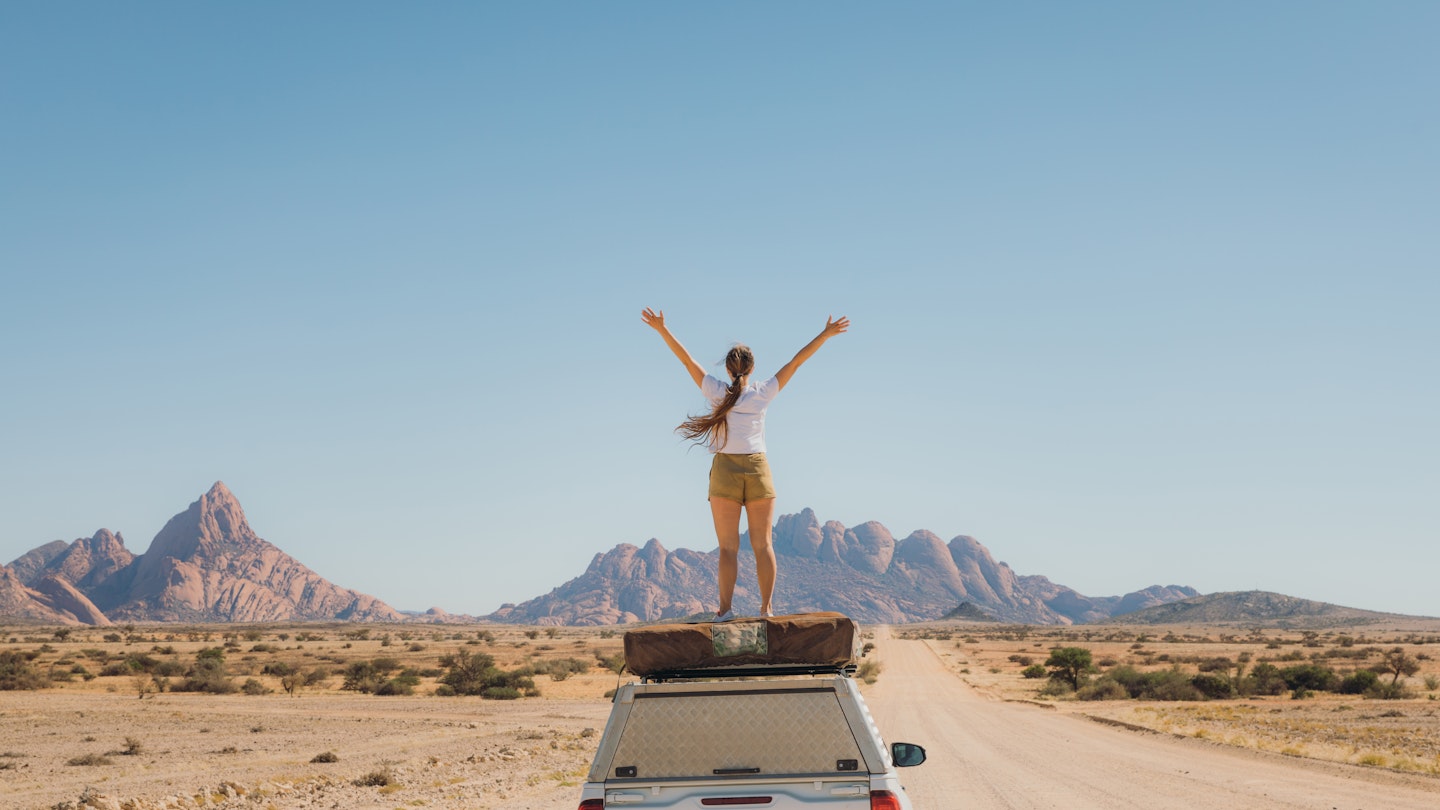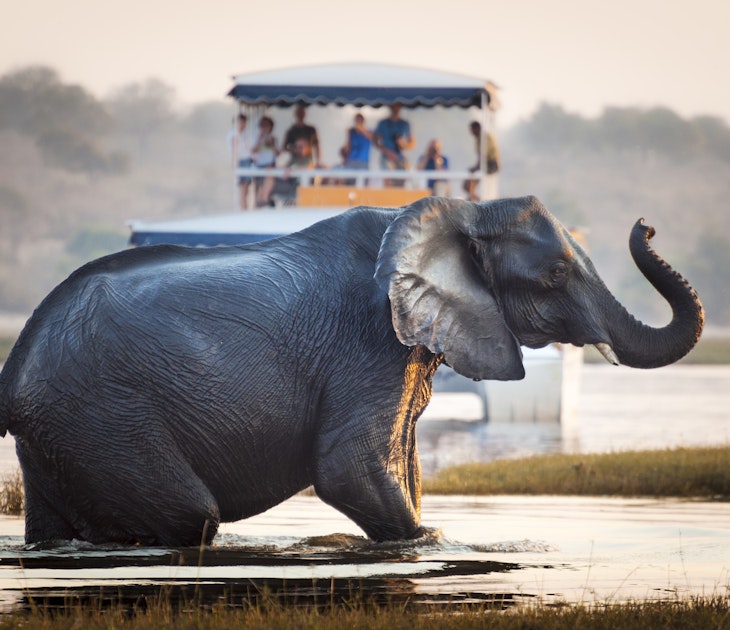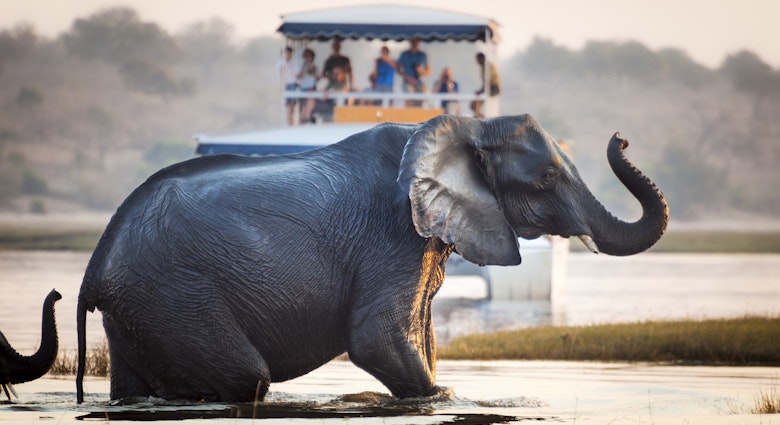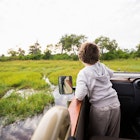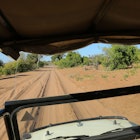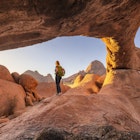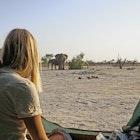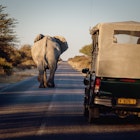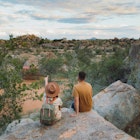Load up the truck, get the roof tent ready and set off to explore Namibia’s desert, dunes, coastline and rivers. With its varied terrain and excellent year-round weather, Namibia is a wonderful destination for adventurous road trippers.
Namibia’s desertscapes look barren yet teem with life. Microscopic lichen –fed by ocean fog – thrive, and the singular conditions have allowed amazing species to develop, including desert-adapted elephants, lions and the gnarled Welwitschia mirabilis, a plant with just two leaves that can live for hundreds of years. To see these things and more, try some of Namibia’s best road trips.
1. Dunes and desert vistas
Best road trip for stargazing
Windhoek–Sossusvlei; 395km (245 miles); allow four days
If you have time for only one shorter road trip, this route from the capital to Sossusvlei is ideal. Once out of Windhoek, the pavement soon disappears as you head southwest past the occasional padstal (farm stall) and guest farm – sometimes with homemade biltong, bread and even homemade gin – before cresting the 1700m-plus (5577ft) Spreetshoogte Pass. Enjoy the magnificent views of the plains below from the top of the pass.
After a steep and winding descent, the next highlight is Solitaire. This junction settlement is ideally situated as a springboard for nearby Namib-Naukluft National Park, as well as Swakopmund on the coast. But don’t rush away too soon: enjoy fat-biking, sublime views toward the Naukluft Mountains on the horizon, tasty apple crumble and the pitch-black night with countless stars.
From Solitaire, head south to Sesriem and the shady Sesriem Canyon, plus an array of nearby lodges. Set off the next day before dawn toward Sossusvlei, a wide and occasionally water-covered pan surrounded by ochre-colored dunes. Nearby is the stunning Deadvlei, an ancient, white-clay pan studded with skeletons of centuries-old camel thorn trees and rimmed by the towering Big Daddy dune – the views from the top of the dune are unbeatable. Arrive as early in the day as possible to avoid scorching midday temperatures and to appreciate the changing light of sunrise on the sand.
Planning tip: Camping just inside the main gate at Sesriem or staying in one of the lodges inside the park will give you an hour’s head start to climb the dunes and reach Sossusvlei before the sun gets high.
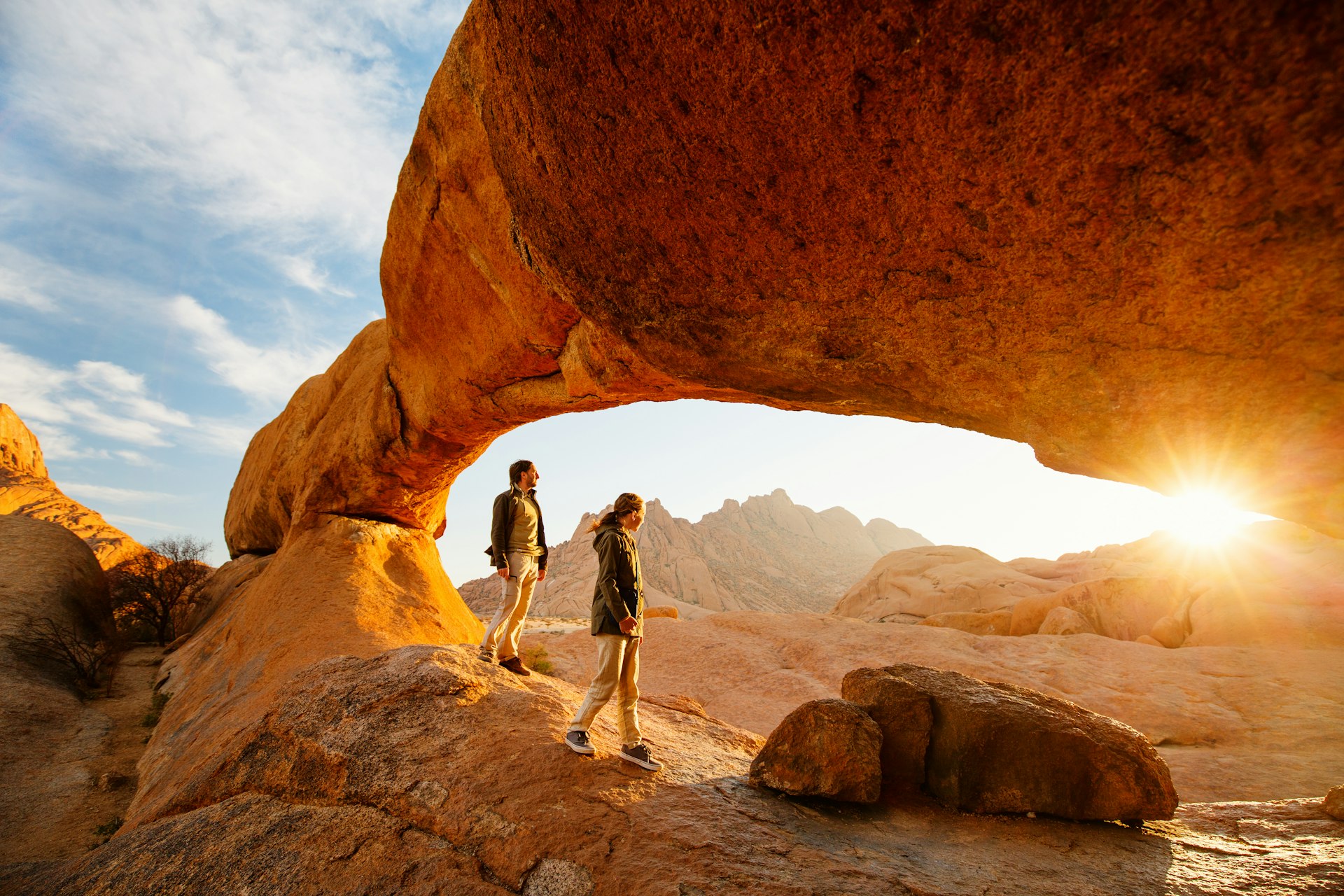
2. Etosha National Park, Damaraland and the Skeleton Coast
Best road trip for wildlife
Etosha National Park–Terrace Bay; 500km (310 miles); allow nine days
This off-the-beaten-track but straightforward route from Etosha National Park through Damaraland to the Skeleton Coast takes in some of Namibia’s best wildlife and most unique landscapes.
Etosha National Park’s southern Andersson Gate is the most convenient access point when coming from Windhoek. Rhinos are frequently spotted at the nearby Okaukuejo water hole, and you’ll be treated to impressive views over the shimmering, desolate expanses of Etosha Pan.
Heading southwest from Etosha via Khorixas brings you to the stunning rock formations of Damaraland. Watch for Welwitschia plants, which are unique to Namibia, along the road and try to spot the area’s elusive desert-adapted elephants against the backdrop of stunning rock formations. Don’t miss the Twyfelfontein rock engravings in the heart of Damaraland. Other highlights include the petrified forest outside Khorixas and Brandberg (Burnt Mountain).
Continue further west to the skull-and-crossbones sign marking Springbokwasser Gate and the entrance to Skeleton Coast National Park. The park is a highlight, with the rough Atlantic waves on one side and stark desertscapes on the other. Jackals and solitary hyenas are commonly spotted. Less common are desert-adapted lions and the bleached whale and seal bones from which the park originally took its name.
The scenery gets better the further north you go along the coast, but a pre-arranged permit is required to venture beyond the windswept fishing outpost of Terrace Bay into the remote expanses opening on to the Kunene River delta. Alternatively, drive south and exit the park’s Ugab River Gate toward the Cape Cross seal reserve and Swakopmund.
3. Northeastern Namibia’s waterways
Best road trip for river cruises
Rundu–Katima Mulilo; 520km (323 miles); allow five days
Northeastern Namibia’s Zambezi (Caprivi) region, with its wetlands fed by the Okavango, Chobe and Zambezi rivers, is a complete contrast to the rest of the country. Start in the busy regional center of Rundu and head east, branching off the arrow-straight main road to explore. Highlights include lovely riverside lodges and campsites, river cruises along the Okavango and sublime sunsets over the inland marshes and waterways. Elephants, hippos and crocodiles are regularly spotted on river cruises.
Carrying on to the Zambia border, don’t miss a night or two in one of the lodges or camps on the Zambezi River, outside of Katima Mulilo, to soak up the peacefulness and stillness of this region. Katima Mulilo also is a perfect jumping-off point if you want to extend your road trip into Botswana’s Chobe National Park or on to Victoria Falls.
Detour: If you have a few extra days, consider a detour to Victoria Falls – just a half-day’s drive from Zambezi’s far eastern reaches.

4. Central Atlantic Coast
Best road trip for families
Swakopmund–Cape Cross; 130km (80 miles); allow one day
Swakopmund is Namibia’s adventure capital. With nearby quad biking, dune boarding, surfing, sky diving and kayak tours, it's a favorite with families and thrill-seekers. The town offers a relaxed vibe and a good selection of eateries and German-style bakeries. Just inland is the otherworldly moon landscape.
From Swakopmund, it's an easy drive along the coast north to Henties Bay, a good lunch stop. About 15km (9mi) south of Henties Bay, check out the wave-pounded wreck of the MFV Zeila, with Cape cormorants and other sea birds roosting on its splintered rigging.
North of Henties Bay is Cape Cross and the Cape Cross seal colony. The experience of being surrounded by more than 100,000 barking, grunting Cape fur seals basking on the rocks and frolicking in the waves is not to be missed. You’ll hear – and smell – the seals before spotting them.
Detour: A good gravel road links Henties Bay with the tarmac B2 towards Okahandja and Windhoek. En route, you’ll pass Spitzkoppe (1728m), with its dramatic rock formations, hiking and good camping.
5. Southern Namibia
Best active road trip
Windhoek–Noordoewer; 1260km (783 miles); allow two weeks
Southern Namibia is a world of its own, and easily worth several weeks of exploring. The area around Aus, about 560km (348mi) south of Windhoek, is ideal for mountain biking. After stretching your legs, head 125km (78mi) further west to the seaside enclave of Lüderitz, with its penguin colonies, time-warped German-style architecture and nearby Kolmanskop, a deserted mining town almost completely overtaken by the desert sands.
Explore to your heart’s content, then hop in the car for another 500km (310mi) to the 160km-long (99mi) Fish River Canyon, which cuts a gorge up to 550m (1805ft) deep through the arid landscape of the |Ai-|Ais/Richtersveld Transfrontier Park. Check the canyon out from above at Hobas or one of the other viewpoints, and then explore its depths on a multi-day hike (winter months only). Finish off with a canoe trip and camping under the stars, based out of the border town of Noordoewer, about 160km (100mi) south on the northern banks of the Orange River.

Tips for driving in Namibia
Renting a vehicle (either self-drive or with a driver/guide) is the only way to reach many parts of the country. Vehicle rental is straightforward and reasonably priced. The roads are generally well-maintained.
Apart from the major north-south and east-west paved arteries, most of Namibia’s roads are gravel. These are generally well-maintained, but be aware of steep verges, dongas (gullies), loose rocks, slippery braking conditions, dust, and cattle and wildlife wandering onto the road. When planning, 80km per hour is considered to be the maximum safe speed on gravel, although 50km per hour is often a more realistic estimate.
Most roads are sparsely traveled and it’s easy to drive for hours without passing other vehicles. While there are fuel stations in all population centers, there’s generally nothing at all in between.
Rental vehicles commonly come equipped with an array of useful equipment, including tire inflators, shovels, rooftop tents and sometimes satellite phones. However, this should be confirmed in advance. Getting 4WD is recommended, as is carrying extra jugs of water.

